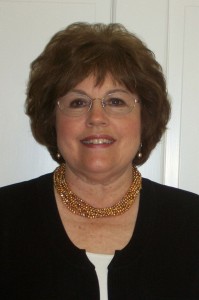Barbara Freet, PHR
Business Name: CaHR / Human Resource Advisors
Website URL: http://www.ca-r.com / http://www.humanresourceadvisors.com
Email Address: bfreet@humanresourceadvisors.com
Year Founded: 1991
Number of Employees: 12
What does your company do?: We provide the full range of HR services for clients nationwide. These include best practices guidance for individual client issues, customized employee handbooks, assistance with leaves of absence administration and more through HR outsourcing. Clients may also choose our PEO (Professional Employer Organization) or our ASO (Administrative Services Organization) to save money and maximize compliance. We also offer staffing and recruiting, and accounting and payroll services. In short, we offer our clients the full range of employee-related services customized for their unique needs.
Was there a specific turning point when you realized your business was moving to the next level?: Originally we chose to provide customized HR services for the small to mid-sized client who doesn’t need a full-time HR presence but does need to be in compliance with state and federal employment law requirements. We have been successful with this model but also realized that our offerings were limited. We partnered with CaHR to expand our services and maximize our effectiveness through the use of upgraded technology.
What processes or procedures have you implemented that have helped grow your company?:
We partnered with a company with a different model, namely, a branch of smaller companies that focus on each of the critical areas needed by clients: customized HR outsourcing, accounting, temp staffing, recruiting, marketing, and a more customized version of the PEO and ASO concept. The model is very successful in Hawaii where the company started and now that model will be replicated in California and other states.
What is most rewarding about running your business?: Assisting clients to solve their employee-related issues with a positive outcome.
What challenges have you faced and how have you overcome them?: The major challenge for me has been keeping up with the multitude of legal requirements and changes in the laws that impact my clients. Since this is an ongoing challenge, to make sure I stay up to date I subscribe to a number of legal publications, belong to SHRM and the California Chamber of Commerce, but most particularly I have developed and maintain very positive relationships with employment attorneys who are excellent resources for me and my staff.
If you were starting over today, what would you do differently?: I might assign clients to certain staff members and task them with retaining those clients by keeping them up-to-date with current legal changes and best practices. There would have been two primary challenges if I had set the business up that way: the first would be for them to provide enough services for them to pay for themselves and the second would be for me to mitigate the potential that they might leave and take those clients with them.
What advice do you have for other business owners?: My business has thrived for all these years because of my referral sources. I do no marketing because I receive 2-5 new clients every week from insurance brokers, attorneys, CPAs, and word-of-mouth referral sources. If your business is a service business like mine, then my advice is to cultivate and care for great referral sources.
Please list any favorite books, tools or resources (software, website, etc.) you would recommend for others: My favorite books are GOOD TO GREAT by Jim Collins, WHAT GOT YOU HERE WON’T GET YOU THERE by Marshall Goldsmith, and BLINK by Malcolm Gladwell. We have used and like Salesforce for tracking client purchases and interactions and the CA Chamber of Commerce has been a great resource.
What is something that people might be surprised to learn about you?: I taught classes for 10 years on “Career Development” to inmates of a Level 3 prison who were mostly murderers and serious offenders. The class was voluntary and my attendees were the “cream of the crop” in that they were inmates who wanted to learn to write resumes and cover letters and deal with questions such as “why is there a 20-year gap on your resume.”









